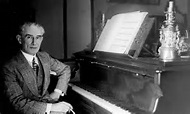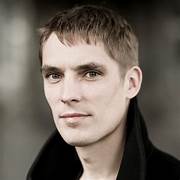The San Francisco Symphony has not run out of extraordinary programs led by stellar guest conductors. On April 25, SFS presented three jewel like performances of seldom played music. It was a thrilling night of musical discoveries and highest musicianship.
Gustavo Gimeno’s conducting was wonderful to watch. He is graceful in his gestures and kept a strong control of his musicians. I was impressed by the way he stopped the music. He held on to the silence that would come after the end of a movement or the whole piece. He was respectful of the music and let it fill the air around the last notes. That silence emphasized the last sounds still in our heads. His conducting is precise, and still he lets the emotion and wit of each piece capture the audience. Gustavo Gimeno is the music director of the Luxembourg Philharmonic and the Music Director of the Toronto Symphony. He is the Music Director Designate of Teatro Real Madrid
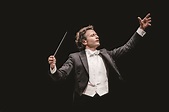 Gustavo Gimeno, conductor, Music Director of the Toronto Symphony
Gustavo Gimeno, conductor, Music Director of the Toronto Symphony
Maestro Gimeno opened the concert with Funeral March from The Great Citizen, Opus 55 (1939) by Dmitri Shostakovich. It was the first San Francisco Symphony performance of this music. When Gimeno spoke to the audience before the Prokofiev Symphony No. 3 in C minor, Opus 44 (1928), he noted that it was a great piece which he had wanted to perform for a long time.
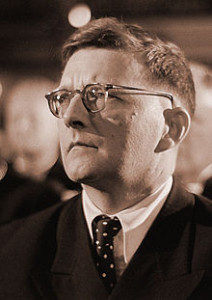 Shostakovich wrote many scores for movies. The Great Citizen was a two part movie about Sergei Kirov, a Bolshevik revolutionary hero who was also a friend of Stalin. Being a friend of Stalin was a different kind of friendship; Kirov was assassinated in 1934. The Kirov Ballet was named for him. Shostakovich lived on Kirovsky Prospect in Moscow. Kirov was hugely popular which was his downfall. Shostakovich wrote about music for movies: “What a rewarding task the composer has in trying to catch the rhythm of the dynamic stream of film sequence…” He recognized that “no theatre or concert hall can compete with the cinema with its audience of millions.” Of this music only the Overture, Funeral March, and Conclusion have survived. The Funeral March, just seven minutes long, was beautiful and moving. it has the character of a Funeral March, but the beauty of a work by Shostakovich.
Shostakovich wrote many scores for movies. The Great Citizen was a two part movie about Sergei Kirov, a Bolshevik revolutionary hero who was also a friend of Stalin. Being a friend of Stalin was a different kind of friendship; Kirov was assassinated in 1934. The Kirov Ballet was named for him. Shostakovich lived on Kirovsky Prospect in Moscow. Kirov was hugely popular which was his downfall. Shostakovich wrote about music for movies: “What a rewarding task the composer has in trying to catch the rhythm of the dynamic stream of film sequence…” He recognized that “no theatre or concert hall can compete with the cinema with its audience of millions.” Of this music only the Overture, Funeral March, and Conclusion have survived. The Funeral March, just seven minutes long, was beautiful and moving. it has the character of a Funeral March, but the beauty of a work by Shostakovich.
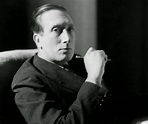 William Walton, composer, 1902-1983
William Walton, composer, 1902-1983
Jonathan Vinocour, Violist, Principal Violist of the SFS, and Gustavo Gimeno, Conductor
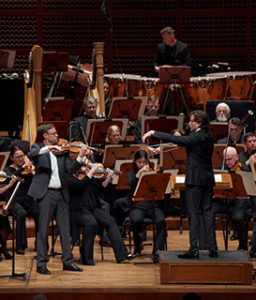
The San Francisco Symphony with Gustavo Gimeno, Conductor, and Jonathan Vinocour, Viola, perform Shostakovich’s “Funeral March from The Great Citizen, Opus 55,” William Walton’s “Viola Concerto,” and Prokofiev’s “Symphony No. 3.” At Davies Symphony Hall on Thursday night, April 25, 2024.
Viola Concerto, by William Walton, has been performed before in Davies Symphony Hall, but not since 1997. Geraldine Walther was the soloist with David Robertson conducting. It was this listener’s first time to hear this great concerto, composed 1928-1929, and revised in 1962. Curiously, the work had influences from Prokofiev and from Hindemith, a composer and viola player. The concerto’s three movements have changeable, ear pleasing, and surprising rhythms. While it is fully a modernist piece, there is a Romantic, English essence. Somewhere Puck plays in the music. It is a challenging, virtuoso piece for the violist, Jonathan Vinocour, Principal Viola in the SF Symphony, since 2009. In an interview, Vinocour says that this is his favorite viola concerto. “…it’s an extremely expressive piece, which to our ears is simply beautiful and moving. It uses lots of clashing harmonies –very mild by today’s standards–but it gives a feeling of yearning.” Listening to this concerto, it seems to have that emotional message at the same time the audience is caught up in the stunning invention and demands upon the soloist. The full audience and the orchestra loudly cheered Vinocour’s triumphant performance.
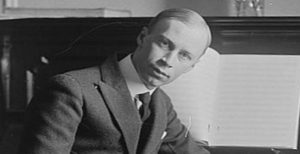 Sergei Prokofiev, composer, 1891-1953
Sergei Prokofiev, composer, 1891-1953
Sergei Prokofiev’s Symphony No. 3 in C minor, Opus 44 has an unusual history. It was written by using music Prokofiev had written for an opera, the Fiery Angel. Prokofiev worked at the Fiery Angel off and on from 1919-1927. He managed to have a concert performance in Paris of the opera’s second act. It is unbelievable that some audience members who considered themselves very avant garde thought the opera was “old hat.”
Having seen the Fiery Angel at San Francisco’s War Memorial Opera House, I found that an impossible critique. It could be called a bit nutty, but as Prokofiev said, “Of orgies there is no end.” The first issue of The Hedgehog, the international arts review, Vol. I, No. 1, November, 1996, included a picture of the apparently (but not truly?) naked Russian acrobats on the cover. The cover feature was “New Faces of Opera.” There were interviews and pictures with Pam Dillard, Zheng Cao, and Mika Shigematsu. The wild acrobats and The Fiery Angel were described in the article, “Moving on Stage,” by Camelita Ng, which included five operas of the season. The Fiery Angel was a co-production of Covent Garden and the Kirov. The men spent most of the opera “perched on scaffolding above the stage.” They were “a visualization of the demons tormenting the heroine.” When the demons come down from their scaffolding, it was fascinating and terrifying.
Brief summary: A nun has visions of an angel. She believes the angel appears as a count. She follows him. As James M. Keller wrote, the nun becomes “a sort of obsessed stalker.” She convinces her convent that her visions are real, and all are possessed with wild sexual and religious craziness. Real or fantasy? The opera had its premiere in Venice, 1955, two years after Prokofiev’s death. The symphony is fantastic itself. Prokofiev selected pieces from the opera to use in his Symphony No. 3. Adjectives such as “intense,” “violent,” and especially “loud” are used by some music writers. The loudness is not continual; the music is brilliant and complicated in a brilliant way. Knowing the story behind the music certainly justifies the music, if one would ever need “to justify” Prokofiev. The composer wrote a description of how he borrowed from his opera to make this symphony. “The material for the Scherzo and for the Andante was also found without difficulty. The Finale took a little longer. I spent far more time whipping the thing into final shape, tying up all the loose ends and doing the orchestration. But the result—the Third Symphony-–I consider to be one of my best compositions.” Prokofiev was a genius. I will vote with him every time.
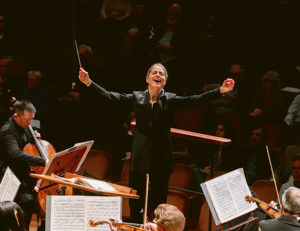 Karina Canellakis, Conductor
Karina Canellakis, Conductor
